
Canon need no introduction from me, the massive Japanese electronics behemoth has been around since
1933 specialising in lenses, cameras, photocopiers, printers, word processors etc. What isn't well known is some of their
personal computing output, in particular building ex-Apple Mac GUI guru Jef Raskin's Cat after
he left Apple and formed Information Appliance Inc.
In the 80s they developed a line of machines aimed at Retail starting with the TX-10 and TX-15 which according to Twitter user
@karttu (Arttu Karpinlehto) were based on the Motorola 6809 processor and ran a proprietary OS called MCX. Later revisions of
the TX- line ran CPM/86 then finally MS-DOS V1 with the TX-50.
The TX-50 was an 8088 powered PC running DOS and featured the revolutionary (pun intended) 3" floppy drive
from Hitachi. This is the same drive used in all iterations of Amstrad's line of
CPC and PCW machines until even they realised it was a bad idea since the rest of the world had gone with the Sony 3.5" drive instead.
Canon responded with the TX-50 II seen here. Released around 1988 I actually wonder if it was designed by Hitachi since aside from the
core NEC chipset and screen everything else has a Hitachi stamp on it.
Ruggedised for retail shop use, the keyboard has a very satisfying 'clunk' to it and the keys themselves
have individually addressable LEDs so you could program (in BASIC) shop functions to each key then illuminate the LED to show which
keys are available at any point. There's also a receipt printer built in which is capable of dual colour. A pair of COM ports at
the rear allow modem connections to head office to upload the takings at close of business and there's a 3rd 4-pin port (helpfully
marked '3') which was maybe for a cash drawer solenoid or a barcode reader.
This machine was given to me by Brian Ecclestone while he was downsizing for a house move, thanks Brian!
Pictures
 | 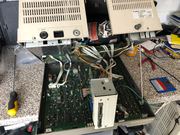 | 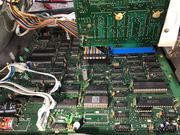 | 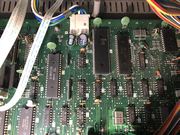 |
 | 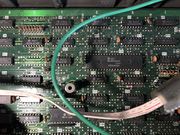 |  |  |
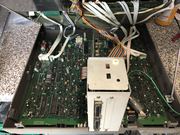 |  | 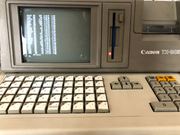 | 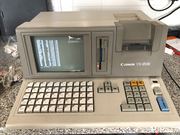 |
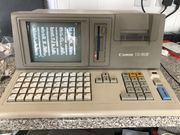 | 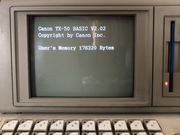 | 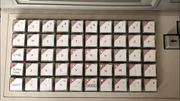 |  |
Disk Images
Boot disk images. These are DOS 1, 1.0MB format disks,
raw disk images created using the Greaseweazle.